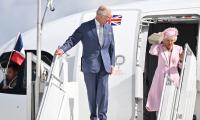In announcing a budget of Rs1477.49 billion, Chief Minister of Sindh Murad Ali Shah emphasised the fact that the shortfall of Rs25.73 billion in the budget was at least partially a result of a shortfall in transfers from the federal government. He said that the federal transfer fell short of what had been promised and this affected Sindh's planning for the future. Following other provinces, the Sindh budget is tax-free and according to Shah is to focus on agricultural productivity and improving the water chain for agricultural, industrial and commercial purposes. The increase of minimum wage to Rs25,000 per month is a laudable step. An allocation of Rs17.4 billion as health-risk allowance for all health professionals in the provinces is also a move in the right direction, but it will require a high level of transparency in its distribution. In addition to this, support for persons affected by Covid-19 over the last fiscal year is also envisaged in the budget. Since a major portion of Sindh’s finances come from the federal government’s divisible pool, any shortfall from there means a setback for all budget planning and utilization. In the last fiscal year, over Rs80 billion was cut from the amount receivable from the federal government.
The budget has an impressive and unprecedented Annual Development Programme (ADP) worth Rs329 billion for 2021-22. A point of concern is that the amount allocated for district ADP is just Rs30 billion whereas more than Rs222 billion goes to the provincial ADP. It means that just like other provincial governments, the government of Sindh is also reluctant to let go of some of its financial powers to the districts. The Sindh budget also stipulates Rs71 billion from foreign project assistance and Rs5.4 billion from the federal PSDP grant for schemes executed by the Sindh government. The ADP for health has been allocated just Rs18.5 billion which appears to be low keeping in mind the population of Sindh which is around 50 million.
Like the federal and Punjab budgets, the issue that arises is how much of what the Sindh budget proposed is doable. Given that Sindh says it faces a shortfall in federal transfers, the province will need to raise more revenue from its own people and its own resources. This is not easy in a province where poverty in rural areas has been measured as the worst in the country, leading to mass malnutrition among children and women. There is the obvious need for the Sindh government to run its programmes more effectively to ease the suffering that such malnutrition and health issues cause. There is also a need to carry out work that ensures the uplift of areas such as Tharparkar where various periods of drought and famine have left people in a miserable condition. The Rs10 billion for cash transfers to Covid-affective people under the Sindh People's Support Programme could help people to some degree. But effectively speaking it is not enough to raise the status of the province or to offer people the help that they need. Beyond budgetary needs, it can only come through a good use of funds available, efforts to use more resources and the good governance that is badly needed to put right the major problems faced in Sindh's larger cities including Karachi and to offer more help to people in rural areas who face water shortage and mass poverty.
Since its ascent to power in 2014, the BJP, under the leadership of Indian Prime Minister Narendra Modi
President’s address was marred by a noisy protest in parliament by the PTI-backed Sunni Ittehad Council
Representational image. —APP/FileIf you live in Karachi, or anywhere else in Pakistan for that matter, you have...
Screengrab shows X services down in Pakistan. — Geo.tvIt has been two months since social media platform X has been...
Health experts estimate an 8.0 per cent and 5.0 per cent increase in hepatitis B and C related deaths, respectively,...
PTI has managed to carve out a tough-to-defeat position in Pakistan’s politics and polity both







